Table of Contents
In the world of gymnastics, the roundoff stands as a fundamental skill, a gateway to unlocking advanced moves and routines. This dynamic maneuver involves a seamless transition from a back handspring to a front handspring, creating a continuous circular motion. Mastering the roundoff not only enhances your gymnastic prowess but also lays the foundation for more complex skills. Whether you're a seasoned gymnast or just starting your journey, this comprehensive guide will provide you with the knowledge and techniques to execute a perfect roundoff.
How to do a Roundoff: Unlocking Gymnastics Maneuvers with Ease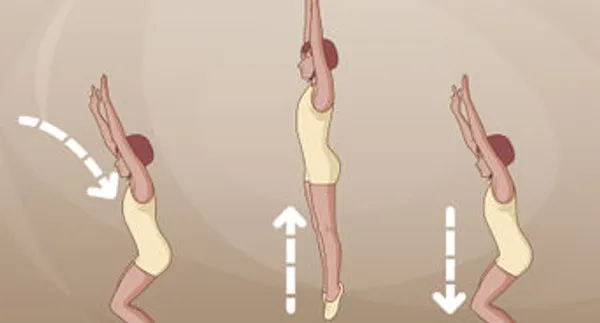
I. How to Master the Roundoff: A Step-by-Step Guide
How to Master the Roundoff: A Step-by-Step Guide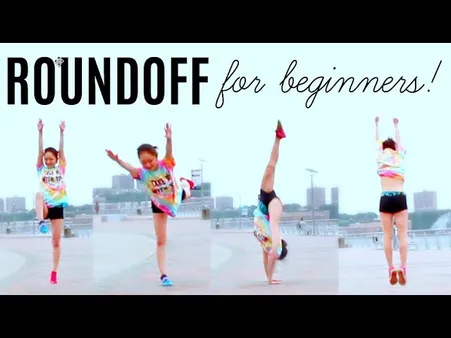
The Importance of a Solid Roundoff
The roundoff is a fundamental skill in gymnastics that serves as a building block for more advanced maneuvers. It involves a continuous forward roll with a half twist, propelling the gymnast into the next skill. Mastering the roundoff is crucial for gymnasts of all levels, as it provides a smooth transition between elements and enhances overall performance.
- Improves body awareness and coordination
- Develops strength and flexibility
- Enhances balance and control
- Provides a foundation for more advanced skills
Step-by-Step Guide to Mastering the Roundoff
1. Preparatory Drills
- Forward Rolls: Begin by practicing forward rolls on a mat to develop the basic body movement and coordination required for the roundoff. Learn how to do a forward roll.
- Cartwheels: Cartwheels help improve balance and control while rotating the body. Master the art of cartwheels.
- Handstands: Handstands strengthen the upper body and core muscles, which are essential for the roundoff. Conquer the handstand.
2. Technique Breakdown
- Starting Position: Stand with your feet shoulder-width apart, arms extended forward, and your head up.
- Forward Roll: Initiate the roundoff with a forward roll, tucking your head and bringing your knees to your chest.
- Half Twist: As you come out of the forward roll, quickly twist your body to the side, keeping your head tucked and your arms close to your body.
- Landing: Extend your legs and arms as you land on your feet, maintaining balance and control.
3. Common Mistakes and Corrections
Mistake | Correction |
|---|---|
Incomplete Twist: | Ensure you fully rotate your body during the half twist. |
Loss of Balance: | Focus on maintaining a strong core and keeping your weight centered over your feet. |
Improper Hand Placement: | Keep your hands close to your body and slightly behind your shoulders during the forward roll. |
4. Tips for Improvement
- Practice Regularly: Consistent practice is key to mastering the roundoff. Dedicate time each day to work on the skill.
- Start Slowly: Begin with a slow and controlled roundoff, gradually increasing speed as you gain confidence.
- Use a Spotter: If you're a beginner, having a spotter can provide support and guidance during your practice.
- Visualize Success: Imagine yourself executing a perfect roundoff, focusing on the feeling of流畅 and control.
Conclusion: The Path to Roundoff Mastery
Mastering the roundoff takes time, dedication, and consistent practice. By following the step-by-step guide, addressing common mistakes, and implementing the improvement tips, you can develop a solid roundoff technique that will enhance your overall gymnastic skills. Remember, patience and perseverance are key to achieving your goals in gymnastics.
II. Perfecting the Roundoff: Technique and Common Mistakes
Perfecting the Roundoff: Technique and Common Mistakes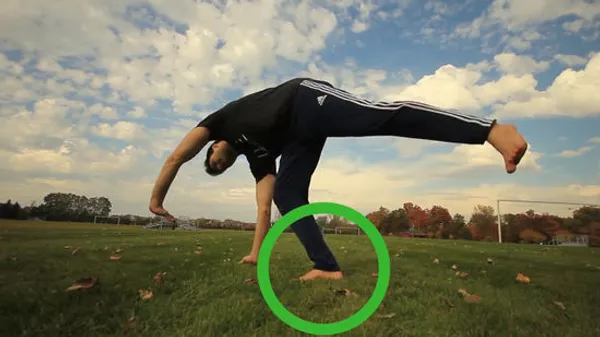
Mastering the Roundoff Technique
The roundoff is a fundamental gymnastics skill that serves as a building block for more advanced moves. It involves a controlled backward roll into a handstand, and it's a skill that requires a combination of strength, flexibility, and coordination. To master the roundoff, it's important to understand the proper technique and avoid common mistakes that can hinder your progress.
- Starting Position: Begin with your feet shoulder-width apart, toes pointed forward, and arms extended overhead.
- Back Roll: Bend your knees slightly and push your hips back, initiating a controlled backward roll. Keep your legs together and your body tight as you roll onto your back.
- Handstand Position: As you come out of the roll, place your hands on the ground shoulder-width apart, fingers spread wide. Keep your legs straight and your toes pointed as you press into your hands to lift your hips and legs into a handstand.
- Exit: From the handstand position, swing your legs forward and over your head, returning to a standing position with your feet together.
Common Mistakes to Avoid
There are several common mistakes that gymnasts make when performing the roundoff. These mistakes can lead to imbalances, injuries, and difficulty in progressing to more advanced skills. Here are some of the most common mistakes and how to avoid them:
Mistake | How to Avoid |
|---|---|
Incorrect Starting Position: | Ensure your feet are shoulder-width apart, toes pointed forward, and arms extended overhead. |
Improper Back Roll: | Maintain a controlled backward roll, keeping your legs together and body tight. Avoid arching your back or throwing your legs back too forcefully. |
Incomplete Handstand: | Press into your hands and fully extend your legs to reach a complete handstand position. Avoid piking your hips or bending your knees. |
Uncontrolled Exit: | Swing your legs forward and over your head with control, aiming to land with your feet together and your body balanced. Avoid kicking your legs wildly or losing control of your body. |
If you're new to gymnastics or working on improving your roundoff technique, it's essential to practice regularly and receive feedback from a qualified coach. With consistent practice and proper instruction, you can master the roundoff and unlock new possibilities in your gymnastics journey.
Additional Tips for Success
- Strengthen Your Core: A strong core is crucial for maintaining balance and control during the roundoff. Incorporate core-strengthening exercises into your training routine.
- Develop Flexibility: Good flexibility, especially in your hamstrings and shoulders, is essential for executing a proper roundoff. Include stretching exercises in your routine.
- Master the Cartwheel: The cartwheel is a fundamental skill that shares many similarities with the roundoff. Practicing the cartwheel can help develop the coordination and body awareness needed for the roundoff.
- Start Slowly: Begin by practicing the roundoff on a soft surface, such as a mat or padded flooring. As you gain confidence and proficiency, you can gradually transition to harder surfaces.
Remember that patience and persistence are key when learning new gymnastic skills. With dedicated practice and proper technique, you can achieve your gymnastics goals and unlock new levels of performance.
Benefits of Gymnastics for Kids
III. Roundoff Variations: Adding Flair to Your Gymnastics Routine
Roundoff Variations: Adding Flair to Your Gymnastics Routine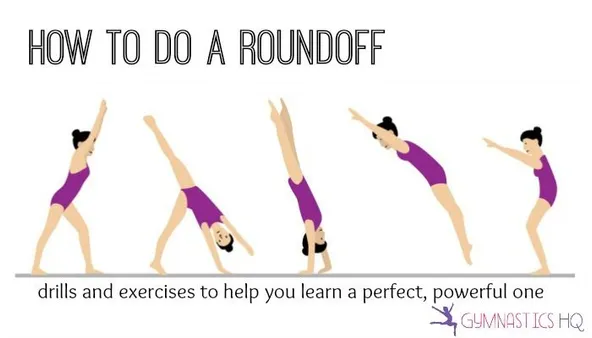
The roundoff is a fundamental gymnastics skill that serves as a building block for more advanced maneuvers. It involves a backward handspring followed by a quarter turn, propelling the gymnast into the next skill. While the basic roundoff is impressive in its own right, gymnasts can add flair and difficulty to their routines by incorporating variations.
One popular variation is the double roundoff, which consists of two consecutive roundoffs performed in quick succession. This variation requires exceptional strength, coordination, and timing. Gymnasts must generate enough power to propel themselves through two handsprings while maintaining control and balance. The double roundoff is often used as a lead-in to more complex skills, such as the back handspring tuck or the double backflip.
Another variation is the roundoff back handspring, which combines the roundoff with a back handspring. This variation requires the gymnast to transition smoothly from the roundoff into the back handspring, maintaining momentum and control throughout the movement. The roundoff back handspring is often used as a dismount from the uneven bars or the balance beam.
Variation | Description | Difficulty |
Double roundoff | Two consecutive roundoffs performed in quick succession | High |
Roundoff back handspring | A roundoff followed by a back handspring | Medium |
Roundoff front handspring | A roundoff followed by a front handspring | Medium |
Roundoff salto | A roundoff followed by a salto | High |
Roundoff tuck | A roundoff followed by a tuck | Medium |
Gymnasts can also perform a roundoff front handspring, which is similar to the roundoff back handspring but with a front handspring instead. This variation requires the gymnast to have strong upper body strength and control to execute the front handspring smoothly. The roundoff front handspring is often used as a lead-in to skills such as the front handspring double tuck or the front handspring pike.
For gymnasts seeking even more challenge, the roundoff salto is a variation that incorporates a salto, or somersault, into the movement. This variation requires exceptional air awareness and body control. Gymnasts must be able to generate enough power to propel themselves into the salto while maintaining the proper body position. The roundoff salto is often used as a dismount from the vault or the floor exercise.
Finally, the roundoff tuck is a variation in which the gymnast tucks their legs into their chest during the roundoff. This variation adds difficulty to the skill and requires the gymnast to have strong core muscles and flexibility. The roundoff tuck is often used as a lead-in to skills such as the tuck back salto or the tuck front salto.
These are just a few examples of the many roundoff variations that gymnasts can perform. With creativity and practice, gymnasts can develop their own unique variations to add flair and difficulty to their routines.
To learn more about gymnastics and other fitness topics, visit our website at kizworld.vn/gymnastics/.
IV. Roundoff Drills and Exercises: Building Strength and Confidence
Roundoff Drills and Exercises: Building Strength and Confidence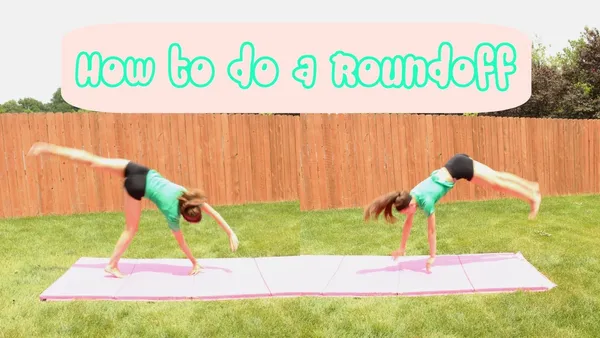
Mastering the roundoff is a crucial step in gymnastics, providing a solid foundation for more advanced skills. To achieve this, gymnasts must engage in dedicated drills and exercises that enhance their strength, coordination, and confidence. These drills not only improve technique but also build the necessary muscle memory for executing the roundoff seamlessly.
One essential drill is the handstand hold. This static exercise strengthens the shoulders, arms, and core, all of which play a vital role in maintaining balance and control during the roundoff. Gymnasts should aim to hold the handstand position for increasing durations, gradually building their strength and stability.
Drill | Benefits | Execution |
|---|---|---|
Handstand Hold | Strengthens shoulders, arms, and core | Hold the handstand position for increasing durations, gradually building strength and stability. |
Cartwheel Drill | Improves coordination and body awareness | Start with a lunge position, then swing your arms and legs simultaneously while shifting your weight forward. Land softly on your feet. |
Roundoff Spot Drill | Develops proper technique and body positioning | With a spotter's assistance, practice the roundoff motion without completing the full rotation. Focus on maintaining a tight body position and proper hand placement. |
Another effective drill is the cartwheel drill. This dynamic exercise improves coordination and body awareness, essential for executing a smooth roundoff. Gymnasts should start with a lunge position, then swing their arms and legs simultaneously while shifting their weight forward. The goal is to land softly on their feet, maintaining control throughout the movement.
To further develop proper technique and body positioning, gymnasts can incorporate the roundoff spot drill. With the assistance of a spotter, gymnasts practice the roundoff motion without completing the full rotation. This drill allows them to focus on maintaining a tight body position and proper hand placement, building the necessary muscle memory for a successful roundoff.
In addition to these drills, gymnasts should also engage in exercises that strengthen their core and improve their flexibility. A strong core provides stability and control during the roundoff, while flexibility allows for proper body positioning and range of motion. Incorporating exercises like planks, sit-ups, and leg raises into their training routine can help gymnasts achieve these goals.
- Plank: Hold a plank position with your body in a straight line from head to heels. Engage your core and maintain the position for as long as possible.
- Sit-ups: Lie on your back with your knees bent and feet flat on the floor. Clasp your hands behind your head and lift your torso off the ground, contracting your abs. Lower back down and repeat.
- Leg raises: Lie on your back with your legs extended and your hands at your sides. Lift both legs off the ground and hold them straight for a few seconds. Lower your legs and repeat.
By consistently performing these drills and exercises, gymnasts can develop the strength, coordination, and confidence necessary to master the roundoff. With dedication and practice, they can unlock this fundamental skill and progress to more advanced gymnastic maneuvers.
V. Conclusion: Embracing Content Excellence
In the dynamic digital landscape, content remains the cornerstone of effective communication and engagement. By embracing the principles of engaging, beneficial, and easy-to-read content, you can craft masterpieces that resonate with your audience, establish your authority, and drive tangible results for your business. Remember, content creation is an ongoing journey, a continuous process of learning, adapting, and refining your approach to meet the evolving needs of your audience. Embrace this journey with enthusiasm and dedication, and you will unlock the true potential of content marketing.